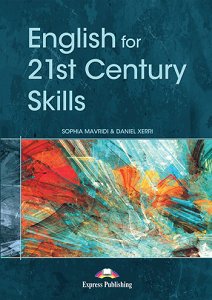As teachers, we probably have to set and mark tests for our English as a Second Language classes as well as prepare candidates for external English Language Learning exams. There are many ways of evaluating learner performance and level, but here we’ll look at four types we may be involved in.
Placement Tests in English as a Second Language Classes
The aim of a placement test is to help sort new students into groups of roughly the same level. As they are not related to any particular course taken, these tests often start simply and get more difficult to cater for a range of abilities. Our objective when we run placement tests is to gauge the learners' general aptitude; as a result, a variety of test activities will give us a more accurate overview than a single assessment.
There is research to show that just having students repeat a sentence provides a quick and reasonably accurate marker of ability. Any sentence will do, as long as it’s not too short or easy.
Try this; the opening sentence of Jane Austin’s Pride and Prejudice:
It is a truth universally acknowledged that a single man in possession of a good fortune, must be in want of a wife.
How about the first words of Alice in Wonderland;
Alice was beginning to get very tired of sitting by her sister on the bank, and of having nothing to do.
Lastly, Winnie-the-Pooh starts:
Here is Edward bear, coming downstairs now, bump, bump, bump, on the back of his head, behind Christopher Robin.
All you do is have students come in one by one, say the sentence, tell the student to repeat and note the number of words the student says before the repetition breaks down. With lower-level students say just the first part of the last two or say the sentence twice.
If you have twenty students to put in two groups, the ten who manage the greatest number of words go into one class and the rest into another. Sentence repetition is a quick way to allocate students to levels when placement at the start of term has to be done rapidly. It also gives you the opportunity to meet all the students.
Diagnostic Tests in English as a Second Language Classes
A diagnostic (also known as formative or progress) test lets you and the students know how well they have learnt particular course elements and are typically done at the end of each coursebook unit or after completing certain structures. The test content and question types should be familiar to students and you should expect a high degree of success as they know what’s in the test. The results also show which areas need revising with the class or individuals.
Achievement Tests in English as a Second Language Classes
Also called an attainment or summative test, an achievement test aims to measure student consolidation over a longer period of time than a diagnostic test. End-of-course school tests, as well as externally set exams, help us assess progress and compare scores. An achievement test doesn’t relate to a particular coursebook, but to the aims of the syllabus. International exams such as the Cambridge ESOL suite are an example where the standard required to pass is consistent year to year. A problem with these tests is that you cannot examine everything in the course in a few hours, so you have to choose samples. There may be one discrete item on the third conditional and none on other conditional forms.
Proficiency Tests in English as a Second Language classes
Cambridge IELTS and the American TOEFL tests are proficiency tests in that they aim to provide a snapshot of a candidate’s ability to apply what they know. Such tests have a future orientation and are often used by further education bodies, employers and immigration authorities to determine acceptable standards for applicants. The question asked is whether their English is good enough to cope with foreseen demands and a way to try and assess this is by representative testing and purposive testing. The former is concerned more with the quality of language.
What's coming next
These four test types overlap; there are elements of proficiency in the three other types, but all have to be valid, reliable and practical. A marking scheme has to be drawn up and results collated. We’ll consider what to test, how to mark and what constitutes a pass in another article.
.png)









